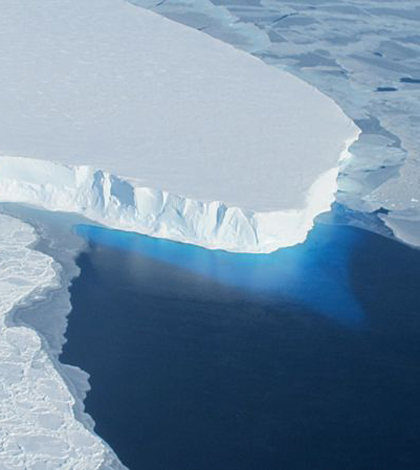Geothermal heat boosts Thwaites Glacier melting

The calving front of Thwaites Ice Shelf looking at the ice below the water's surface (Credit: NASA, via Wikimedia Commons)
University of Texas researchers found that both ocean erosion and geothermal heat are responsible for the melting of the Thwaites Glacier in Antarctica, according to a University of Texas press release.
The researchers used radar to analyze hot water currents and estimate ice melt rates beneath the glacier. Magma flow and tectonic activity beneath the Earth’s crust are likely responsible for the wide dispersal of heat on the glacier’s underside.
Located on the West Antarctic Ice Sheet, the Thwaites Glacier has gained recent attention as scientific study indicates it is nearing collapse.
Image: The calving front of Thwaites Ice Shelf looking at the ice below the water’s surface (Credit: NASA, via Wikimedia Commons)





0 comments